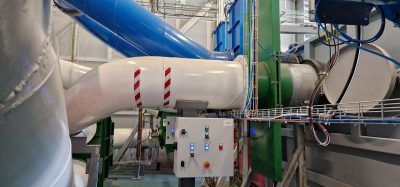Technology will only get us so far, and so collaboration is key
- Like
- Digg
- Del
- Tumblr
- VKontakte
- Buffer
- Love This
- Odnoklassniki
- Meneame
- Blogger
- Amazon
- Yahoo Mail
- Gmail
- AOL
- Newsvine
- HackerNews
- Evernote
- MySpace
- Mail.ru
- Viadeo
- Line
- Comments
- Yummly
- SMS
- Viber
- Telegram
- Subscribe
- Skype
- Facebook Messenger
- Kakao
- LiveJournal
- Yammer
- Edgar
- Fintel
- Mix
- Instapaper
- Copy Link
Richard Hartshorn, Aviation Technical Director at Atkins, explores how technology will only impact an airport’s operation to a certain extent; the real benefits lie in the enhanced collaboration of an airport’s stakeholders.


With passenger demand set to double over the next 20 years, and many airports already experiencing peak congestion, using existing assets more efficiently is an area of immediate focus. When industry leaders discuss how we will achieve this, the response is almost always that technology will solve it.
My view is that enhanced collaboration of an airport’s stakeholders is actually the answer. Technology will only make airport businesses efficient to a certain degree; it is how the businesses work together that is often overlooked.
Collaboration within the industry
The airport is a unique operational environment: It requires many different organisations to work together. At large hub airports, this involves hundreds of companies. Heathrow, for example, states that over 400 organisations are involved in its operations. How well stakeholders operate and collaborate in this airport ecosystem will determine the passengers’ experience. Where businesses at an airport demonstrate a silo behaviour with a lack of planning and information sharing, the passenger experience will be inconsistent and ultimately frustrating. At airports delivering consistently strong passenger service levels, it is often evidenced by more mature levels of B2B integrated working. The critical element here isn’t technology, it is how organisations work together – technology should just be an enabler to make this easier. High-quality stakeholder management is key to delivering the collaboration needed for a seamless passenger experience. This requires us to listen and gather requirements on what each business and department needs.
What role does technology play?
With increasing digitisation of the passenger journey – from biometric identity management to self-service bag drops – a huge amount of data is being captured by airlines, ground handlers and airport operators. Ensuring continued high levels of integration across the passenger journey requires the sharing of this data and managing the stakeholders through this change process. Airports are highly-regulated businesses operating to strict safety and security protocols, and sharing data requires overcoming commercial and confidential hurdles. Plus, the data needs to be cleaned up, anonymised and formatted so that it can be used by others.
Working towards a better future
The benefits technology brings aren’t being questioned here. Data analytics supports more efficient resourcing and improved use of airport assets, often managed through airport operational centres with many operational stakeholders collocated together.
Increasing automation delivers a faster service to the customer at key touchpoints, such as border control, potentially reducing dwell space. Technology enables new experiences to enhance the service to the customer or new revenue stream opportunities.
What is being questioned is whether we are focusing so much on technology that we are losing sight of the bigger picture: Ensuring we all work together to achieve the best outcomes for the passenger. The methods and assumptions that have long underpinned our airport designs are changing rapidly. The planning norms of the past need updating as airports demonstrate that they can use their assets to new levels of intensity and deliver greater service levels to their customers.
So, instead of thinking about how many self-service kiosks or self-boarding gates there are in a terminal, let’s start measuring an airport’s ‘integration level’ or ‘collaboration maturity’ as the means for improving airport capacity.
Issue
Related topics
Biometrics, Border control, Capacity, New technologies, Passenger volumes, Terminal operations



















Your main point is spot on. I believe in full integration of technology, operators, and stakeholders in the airport enterprise – to properly serve customers. Really embracing the truth, data without humans to add context will only take us so far, is key to full integration. Integration is the foundation of the profession of Emergency Management. I’ve been an Emergency Manager for 23 years – built the Emergency Management Program for DFW, welcoming the data / IT experts to the table. Getting all people to the middle is true balance and service.